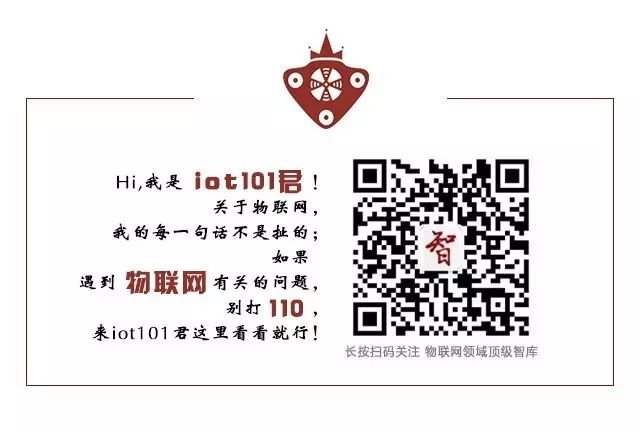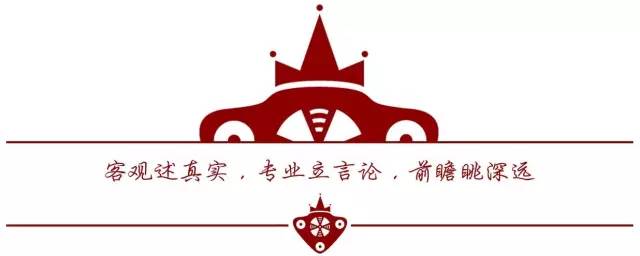
Reprinted from:Tenggu Chuangtou
IoT Think Tank Organized and Published
Please indicate the source and origin when reprinting
—— [Guide] ——
Industry is still in the early stages of a technological transformation driven by IIoT, big data, and other emerging technologies. This is not hype, but an inevitable consequence of advancements in software, hardware, networks, and systems affecting nearly every sector of the global economy.
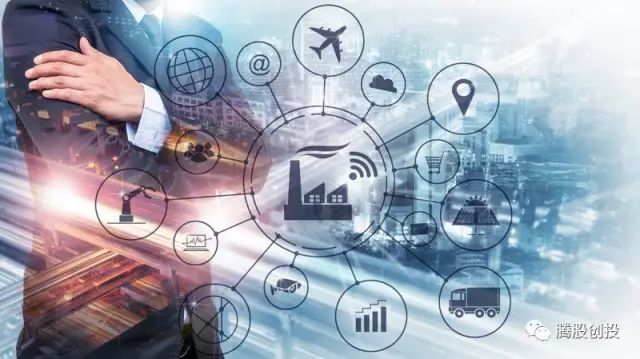
Thirty years ago, if you were the scheduling manager of a high-performance valve manufacturer in the United States, your daily planning was very slow, and communication with partners had to be done via phone, fax, or mail. Employees manually recorded inventory and checked out shipments. Regular maintenance crews relied on human inspection, and drivers could contact each other via two-way radio if they were close enough, but in many cases, the only way to relay information about specific goods or new receiving locations was to have drivers check in periodically by phone. These inefficiencies existed throughout the supply chain, from factories to customer facilities. It was outdated, prone to delays, and costly.
The times have changed; modern industry now relies on advanced machinery, sophisticated software and communication technologies, and modern management techniques emphasizing lean inventory and integrated supply chains.
What is the Industrial Internet of Things
But there is another trend: buildings, factory equipment, vehicles, warehouses, pallets, and workers themselves are increasingly connected to the network. The range of devices extends from tiny environmental sensors to complex industrial robots. The networks they use may be wired or wireless. Some low-power devices will be battery-powered or connected via Power over Ethernet (PoE). Others must be plugged into or connected to the building’s electrical system. Many devices have their own firmware that can be updated or reprogrammed remotely.
In other words, sensors, controllers, and dedicated devices now exist at the edge of the network, assigned unique IP or network addresses, collecting data, and performing numerous tasks that notify and extend business capabilities. This is the Industrial Internet of Things (IIoT), which will transform manufacturing, transportation, construction, mining, and the energy sector.
IIoT Practices
Still using the example of a high-performance valve manufacturer. In the past, managers only requested new inventory after getting off the truck to the warehouse and needed someone to count manually. New parts orders were sent to suppliers via fax or express mail, and a few people on each end were required to handle paperwork and accounting.
Today, the same company can obtain more dynamic inventory management, thanks to IIoT technologies such as RFID-enabled pallet tracking and using cameras and weight sensors to calculate the number of existing parts in the warehouse. This data is integrated with ERP and other software systems. When the supply of a certain part drops to a specific threshold, the system automatically submits an order to suppliers for replenishment. Employees rarely need to be involved in ordering, speeding up the entire supply chain’s shipping volume and reducing labor requirements in place of the previously manual, high-touch process.
The efficiencies brought by IIoT can extend to the transportation of finished valves. The days of truck drivers relying on payphones and paper lists for checks are long gone. Now, the company’s IT systems use optimization models to determine the most effective use of transport fleets and track products nationwide, providing real-time shipping data feedback to headquarters and instantly relaying it to drivers via mobile applications or other devices connected to the network. RFID-enabled pallets are tracked as they leave the warehouse, loaded onto trucks, and automatically logged at the customer’s receiving center after delivery.
Onboard sensors as part of Electronic Logging Device (ELD) systems monitor vehicle speed and driving time, and even track individual drivers’ braking frequency, which helps save fuel, improve driver safety, and reduce idle resources. If a truck driver performs dangerous maneuvers or drives too long, the system alerts the driver and notifies dispatchers. Additionally, ELDs comply with federal monitoring requirements for drivers, replacing the paper logs that drivers previously had to fill out daily.
IIoT also enables better fleet maintenance. Onboard sensors can alert fleet managers to issues with specific vehicles without needing to take trucks into maintenance shops for regular upkeep. Trucks can be fixed or reassigned to easier routes, reducing emergency repairs and transport delays.
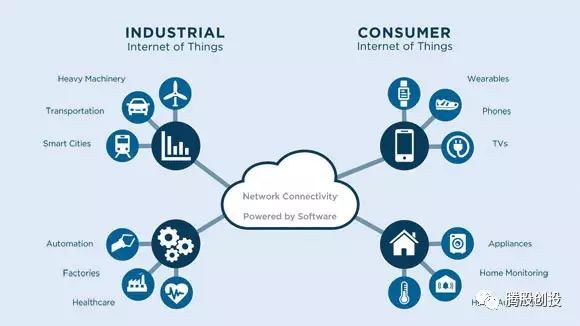 Global Impact
Global Impact
Similar transformations are occurring across various industries. German automotive parts manufacturers use advanced technologies such as IoT to manage their supply chains and manufacturing facilities. Shipyards building submarines for the US Navy rely on RFID sensors, devices, and antenna networks to track tool usage and hundreds of thousands of parts. North American power companies use high-resolution sensors to monitor grid performance and proactively collaborate with neighboring utilities and local authorities to prevent issues such as blackouts. In a mine in Western Australia, large unmanned excavators equipped with cameras and hundreds of sensors have increased output and enhanced safety.
According to IDC, global spending on the Internet of Things (including both consumer and industrial IoT) reached $737 billion in 2016 and is expected to grow at a rate of 15.6% annually through 2020. In 2016, the industries with the largest investments in IoT included manufacturing ($178 billion), transportation ($78 billion), and utilities ($69 billion). Growth has entered a hockey stick effect (initially low sales, followed by a sudden spike at the end): the number of connected devices has already surpassed the population, with Gartner predicting that connected devices will exceed 21 billion by 2020. However, some sources, such as Beecham Research, indicate that given the real-world capacity constraints, including insufficient resource investment, such high growth rates are unrealistic.
While some companies are wary of the hype surrounding technology and the vendor hype around disruptive technologies, IIoT remains a genuine trend that will impact many industries in the coming decades. Industrial suppliers have begun preparing for the anticipated wave of IIoT and are focused on the vast opportunities within vertical markets. However, the challenge for businesses is deciding how to implement IIoT in their operations, along with the significant uncertainties that come with it.
Why Choose IIoT
Although IIoT technologies have existed for over a decade, the concept of IIoT is different from IT before the IT and software revolution. If IT connects people, data, and business systems, IIoT will further evolve to provide IP connectivity for a widely distributed network of sensors and machines, thereby increasing productivity and providing new insights for businesses.
What drives this trend? Certainly, the latest technological innovations and application trends make IoT possible. PwC identifies several factors driving IIoT:
-
Cheap new sensors
-
Faster processors
-
Cheaper storage
-
Integrable open platforms
-
Vendors and partners encouraging adoption
-
Core business systems becoming more powerful
-
Data analytics and machine learning
IIoT is not just a technology story. According to Robert McCutcheon, PwC’s U.S. Industrial Products Leader, many companies are not only looking to reduce costs but also to speed up production and delivery, viewing it as a growth platform and a means of effective competition.
McCutcheon states, “IoT is primarily driven by CEOs and boards; it has become a topic of discussion in boardrooms regarding disruption and competition. Much of the discussion revolves around: ‘What will our competitors do from a technology standpoint? What will customers do from a technology perspective? What disruptions might we face, and what opportunities do we have to leverage and influence the market?’
For IT managers, the IIoT wave is disrupting their traditional roles. In companies implementing IIoT technologies, IT cannot be confined to server rooms or desktop support. Instead, IT is increasingly viewed as a critical partner as devices and sensors become active in the shop floor and field.
Indeed, adopting IIoT represents a reallocation of systems, processes, and knowledge centers. IT managers and staff, along with their peers in manufacturing, operations, distribution, and supply chain management, must rise to the occasion to implement IIoT technologies and reap the benefits. This can be uncomfortable for some, especially as it requires relinquishing control and sharing data beyond traditional silos.
IIoT Efficiency Gains and Talent Shortages
Currently, industrial enterprises leveraging IIoT are often looking to improve efficiencies. Streamlining processes and connectable platforms are the primary objectives of IIoT integration. At Georgia Tech’s Manufacturing IoT Workshop, Andrew Dugenske, director of the Institute’s Industrial Information Systems Center, listed some areas that IIoT could address:
-
Asset and inventory management
-
Capacity and performance monitoring
-
Quality analysis
-
Real-time alerts
-
Safety and compliance
-
Throughput monitoring
-
Warehouse optimization
Dugenske believes that company culture has a significant impact on whether a team implements IoT. He states, “Companies that appreciate the benefits of IoT and are willing to invest in new technologies will achieve timely returns and competitive advantages. Companies that delay implementation will find themselves at a disadvantage that is hard to overcome.”
Of course, as more companies turn to IIoT, they will need an increasing number of qualified talents to design, implement, and maintain IIoT-based systems. McCutcheon says, “This requires new skills that differ from traditional manufacturing environments.”
Companies can collaborate with external stakeholders such as local governments and vocational training centers to train technicians capable of working in future factories. However, McCutcheon warns that businesses also need to overcome a perceived gap. McCutcheon states, “Historically, manufacturing has not necessarily been the highest-tech environment. Manufacturers must change this perception; we now have some of the most advanced technical jobs emerging, so it is also a pathway to attract talent, not just training.”
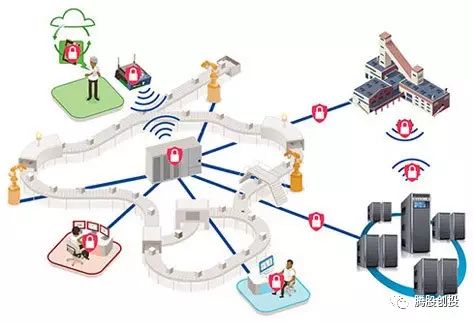 Challenges in IIoT Data Management
Challenges in IIoT Data Management
IIoT systems generate astonishing amounts of data. An oil drilling platform equipped with IIoT systems can generate up to 8TB of data in a single day. Transportation equipment equipped with IIoT sensors varies widely, from cars (which generate 1PB of operational data daily) to jet aircraft (which generate 333GB of data per minute for a single Boeing 737 engine). As more companies establish their IIoT infrastructure and more sensors come online, the volume of data will continue to grow.
How to handle all this data? If the ultimate goal is to streamline operations, notify managers, and generate actionable insights, then the data will need to be transmitted, processed, aggregated, visualized, and stored. The IT demands are substantial. A single IIoT-enabled building or vehicle may have thousands of sensors and devices sending data over wireless or wired networks. Data can be processed on-site, in remote campuses, or in vehicle control systems using chips or dedicated hardware. Data can also be transformed or shared using APIs or custom software hooks, or stored in memory.
When such systems scale across an entire company, including its core campuses, satellite facilities, partner locations, remote sites, fleets, and employee devices, it is evident that IIoT has significant data dimensions. This means that a robust data strategy is needed to ensure data utilization, such as turning to cloud-based applications and storage.
Businesses that do not fully leverage the data available to them will face real risks. A McKinsey report indicated that only 1% of oil rig data will be utilized from 30,000 sensors. This is because sensors are primarily used for problem detection rather than optimization and predictive analysis. This wastes big data.
There are also security considerations regarding IIoT. This remains an unknown territory for companies dealing with network security for data centers, office systems, and personal devices. In an IIoT environment, there needs to be a greater emphasis on how to protect devices, data, communications, and processing capabilities far beyond the traditional IT scope.
The nature of IIoT hardware, software, and network connections leads to some unintended security consequences. Many low-cost devices, such as remote cameras, routers, and even DVRs, have limited security features (including hard-coded default passwords and telnet access) or never receive patch updates. Once compromised, they can lead to DDoS attacks and malware distribution, among other issues. A notorious IIoT botnet named “Mirai” has existed globally and remains a problem to this day.
Integrating IIoT
As you might expect, deploying an IIoT system across the enterprise is very complex. Requirements include low-cost, robust sensors, and other devices that can integrate with existing systems. Managers must also determine how devices will be powered and connected to data networks. In fact, system architectures may need to be modified to accommodate IIoT, and significant integration challenges may exist.
Georgia Tech’s Dugenske states, “The sensors, bandwidth, processing power, and communication capabilities required for IoT are all decreasing. However, it does not solve a key question: What specific data structures and protocols are used? These massive cost drivers are often overlooked.
Theoretically, whether you are dealing with general-purpose controllers or industry-specific products, IIoT standards can alleviate integration. Companies can turn to products built on existing standards, whether they are global IT standards (such as 802.11ac) or products explicitly developed for industrial use, such as the IEEE standard 1377-2012 for electric meters.
This has also driven the formation of alliances to promote the establishment of new standards. These include the Industrial Internet Consortium, which promotes common architectures, interoperability, and open standards across energy, healthcare, manufacturing, transportation, and smart cities.
It is still unclear which standards will dominate, but this is a significant issue for IIoT. It is estimated that by 2020, LPWAN will reach 345 million (about 26% of the total). Uncertainty leads to potential integration issues and encourages some industrial companies to take a “wait-and-see” approach before betting on any product line or technology standard.
The Future of IIoT
Industry is still in the early stages of a technological transformation driven by IIoT, big data, and other emerging technologies. This is not hype, but an inevitable consequence of advancements in software, hardware, networks, and systems affecting nearly every sector of the global economy.
Some companies are already leveraging IIoT to enhance productivity and develop new products and services. As the prices of advanced sensors, processing power, and data storage continue to decline, mainstream industrial companies and their competitors will turn to IIoT to remain competitive and seek new growth opportunities.
However, significant barriers still exist. Concerns over security, talent, and interoperability may hold some industrial companies back. Others may have questions about benefits, costs, and return on investment. Certain technologies are still in early development stages, hindered by uncertainties over standards or technologies and physical limitations (such as battery life).
Introducing new technologies into the shop floor, assembly lines, vehicle maintenance bays, and remote sites is also a challenge. Modern industrial equipment is complex and powerful, but much of it is not yet connected to IP networks. Additionally, some types of industrial machinery have very specialized uses in verticals that few people are aware of, and these machines may not have IIoT capabilities in the coming years. Replacement or retrofitting is possible; in fact, as the pace of transformation accelerates, it will be necessary. But for today’s business or IT managers, that day may seem far off. In a 2015 manufacturer survey, nearly half of respondents indicated they had no plans to use data from smart sensors to improve manufacturing and operations.
Some express caution, while others see a massive opportunity. Forward-thinking industrial companies and startups in energy, transportation, and manufacturing are making significant investments in IIoT and big data. These companies hope to prepare for the future, leveraging IIoT for significant competitive advantages or developing new products and services.
Imagine a world where sensors, systems, data, and even robots and artificial intelligence are ubiquitous. Assembly lines, supply chains, and remote sites will be primarily operated by autonomous devices and algorithms, reducing delays while enhancing worker safety. Self-driving vehicles on the road and in the air will be able to “talk” to the pallets they are transporting to better monitor their contents and coordinate deliveries. This is not science fiction; it is all possible through IIoT.

Previous Hot Articles (Click on the article title to read directly):
-
“How Difficult Is It to Make Smart Locks for Shared Bicycles?”
-
“Cognitive Computing, Blockchain IoT, IoT Security… Those Who Understand Will Control the Future”
-
“KUKA, ABB, Fanuc, Yaskawa, the Four Major Industrial Robot Giants Have Long Been Stationed in the IoT Field”
-
“[Heavyweight] A Comprehensive Report on the IoT Industry, Leading the Way in Domestic IoT Industry’s Two-Dimensional Perspective”
-
“A Cartoon Explains: Besides WiFi and Bluetooth, What Can the Recently Hot NB-IoT Do?”
-
“A Cartoon Explains: Behind NB-IoT, What Is the LoRa That Everyone Is Talking About?”
